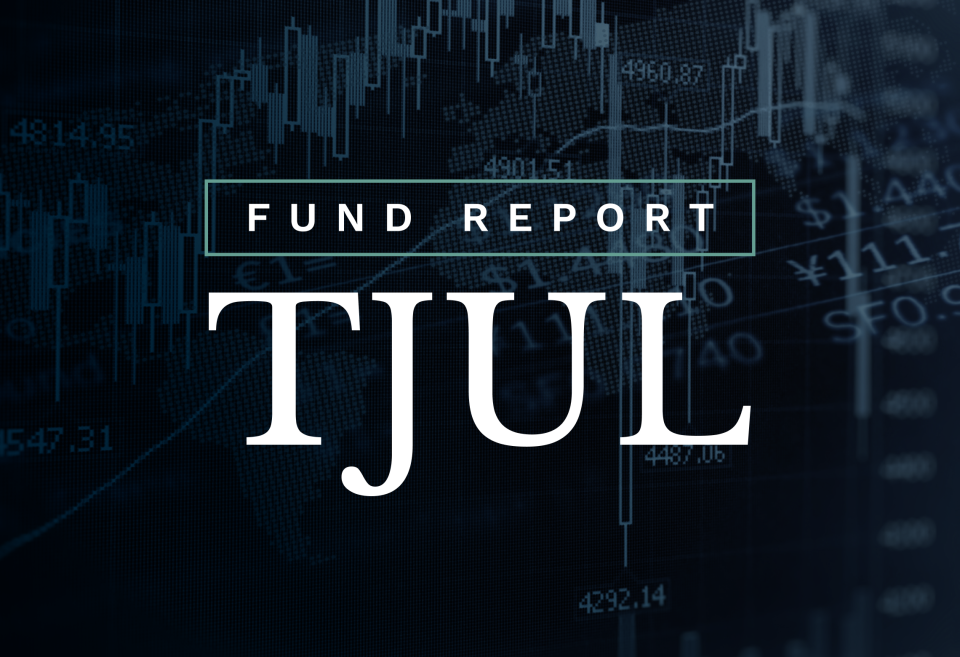TJUL: The Innovator Equity Defined Protection ETF

The Innovator Equity Defined Protection ETF (TJUL) is an exchange-traded fund offering a defined outcome strategy from Innovator ETFs, a leading issuer of buffered ETFs.
TJUL, the 2024 etf.com Awards Best New ETF nominee, offers a built-in buffer against market losses while simultaneously capturing upside potential.
“We believe TJUL is a great tool by providing upside to the equity markets, but with no downside risk. This is a powerful solution for investors to get some of that cash that's on the sideline equitized into the markets,” says Innovator Chief Investment Officer Graham Day.
How Does the TJUL ETF Work?
TJUL, the Innovator Equity Defied Protection ETF, is an actively managed fund that seeks to track the return of the SPDR S&P 500 ETF Trust (SPY), up to a cap, while fully hedging downside risk over a two-year outcome period.
To achieve its objective, TJUL uses FLEX options, which are unique option contracts in that they provide greater customization compared to standard listed options.
“What this means is you have a 100% built-in buffer against market losses and 18% upside potential. Most importantly, you know exactly what you're going to get,” says Day.
TJUL’s expense ratio is 0.79% and its assets under management (AUM) is $229 million.
What Is a Defined Outcome ETF?
Defined outcome ETFs, also sometimes called buffer ETFs, are a type of investment vehicle designed to offer investors a predefined range of returns over a specific outcome period. They achieve this by combining traditional equity exposure with embedded options strategies. Here's a breakdown of how they work:
Underlying asset: Defined outcome ETFs typically track a broad market index like the S&P 500 or a specific sector index. This provides exposure to the potential growth of the underlying stocks.
Options overlay: These ETFs use a series of options contracts to create a buffer against potential losses and limit potential gains over a set period, usually one year. The specific options strategy used will vary depending on the ETF's target outcome.
Defined outcome ETFs can offer some protection against market downturns. The options component aims to limit potential losses within a predefined range, providing a buffer compared to directly owning the underlying stocks.
However, investors should also be aware that, in exchange for the downside protection, defined outcome ETFs also limit potential gains. If the market significantly rises, the ETF's returns might be capped at a certain level.
How Can TJUL Fit into a Portfolio?
According to the fund’s issuer, Innovator ETFs, there are a number of ways that TJUL can be used within investor portfolios. First, TJUL can be used to equitize cash. It can also be used as an alternative to bonds as it offers higher upside return potential while still protecting against 100% of losses.
According to Innovator CIO Graham Day, “Today, investor portfolios have more than 30% of their allocation to cash. Much of this is because investors are unwilling or unable to take on market risk. But we also know that investors are better off long term not being over allocated to cash. The question is, how do you get investors comfortable to invest in the equity markets?”
Bottom Line for Investors on TJUL
The TJUL ETF offers an innovative way to capture the stock market’s upside potential while eliminating its downside. This provides investors with an alternative to traditionally stable assets like bonds. To achieve its objective, TJUL uses FLEX options, and investors should note that the outcomes that the fund seeks to provide may only be realized if it is held for the full duration of the two-year outcome period, which ends July 2025.
As with any investment security, investors should carefully evaluate their investment goals, risk tolerance, and investment time horizon before deciding if defined outcome ETFs are a good fit for their portfolio.
